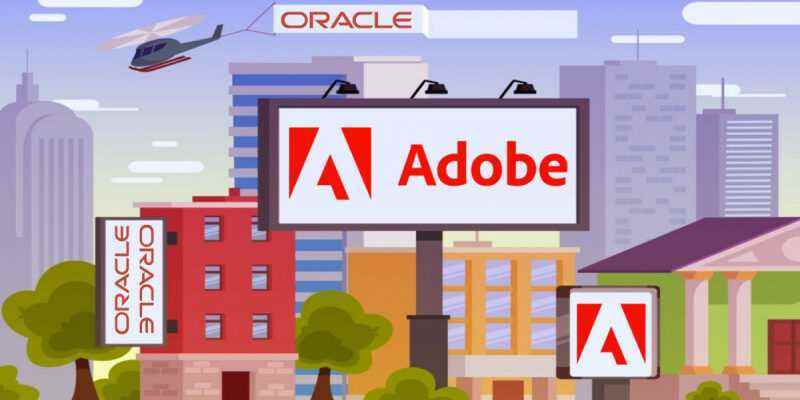The point here is not to tell if the companies were created in a garage or if one of their founders wrote the source code at the age of 16 and a half. Since we are a little lazy, we are interested in their financial performance over the past ten years.
Let’s start with Oracle.
The world leader in databases experienced limited growth in its turnover over the period, a sign of a mature business: revenues rose from $35.5 billion to $40 billion. The operating margin is incredibly stable, averaging around 44% for the past 10 years. The net margin fluctuates a little more, with an anchor point of around 25%. The activity is very capital-intensive and highly profitable, which makes it a real cash machine. Over the 2011-2021 cycle, Oracle thus generated $125 billion in cumulative free cash flow, or an average of $12 to $13 billion per year, an amount restated for stock option compensation. On the basis of a normalized enterprise value of around $235 billion, the share therefore pays 18 times the annual results, which remains quite high despite its undeniable qualities.
Oracle has been able to take care of its shareholders by carrying out massive share buybacks: half of the shares in circulation have been withdrawn over the previous decade. All of the profits went to these buybacks. As for the $25 billion in dividends and the $34 billion in acquisitions, they were financed by debt. Oracle is therefore what can be called a “share cannibal”, a devourer of shares, which would not spoil in the portfolio of Berkshire Hathaway, even if Warren Buffett is notoriously cautious on the technology sector.
We continue with Adobe.
Again a world leader, but this time in creative software. Adobe is also a quasi-monopoly on the professional segment. Its growth profile over the 2011/2021 period is much more pronounced, with revenue quadrupling from $4 billion to $16 billion and margins improving significantly thanks to the move of its solutions to the cloud. Adobe is one of the few SaaS companies that actually keeps its promises, it must be said! Moreover, its operating margin has increased from 25 to 35% over the previous decade to more than 40% now. The balance sheet is of course very solid and the generation of cash optimal. Small peculiarity, Adobe generates more free cash flow than net income because the depreciation charge is higher than the investments.
Like Oracle, Adobe is a cash machine: $30 billion in cumulative cash profits over the period, including $6 to $7 billion in 2021. If we compare this with an enterprise value of $185 billion, we are on a more aggressive valuation than Oracle, but with a more attractive growth profile. Adobe also buys back shares ($20 billion over 10 years), but devotes a larger part of its earnings to external growth. This is also the reason why there is no dividend. The company has not yet explored all its sources of growth, ie it has not yet reached its plateau unlike Oracle.
To finish on the subject, we are in front of two superior quality companies, with similar characteristics. One is less valued but its business growth is modest, while the other is more expensive but still has significant potential for revenue growth. Objectively, on correct valuation levels, these files are “no-brainers”, securities to have in the portfolio without thinking too much. To be monitored therefore in the context of the current correction of the markets in general and of technology stocks in particular.
Oracle publishes the results of the fiscal year ended May 31 this evening and Adobe will unveil the half-yearly results for its fiscal year started in December this Thursday.
